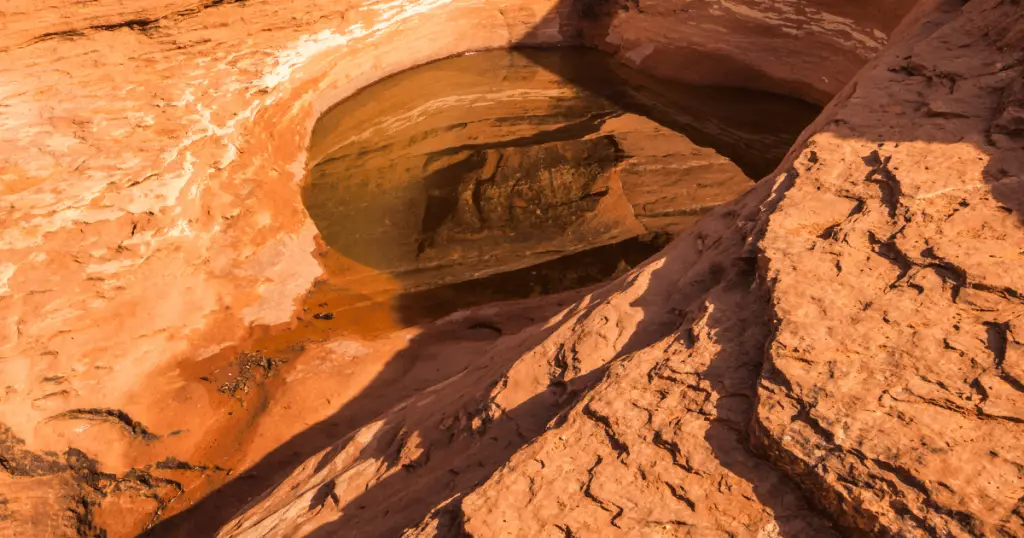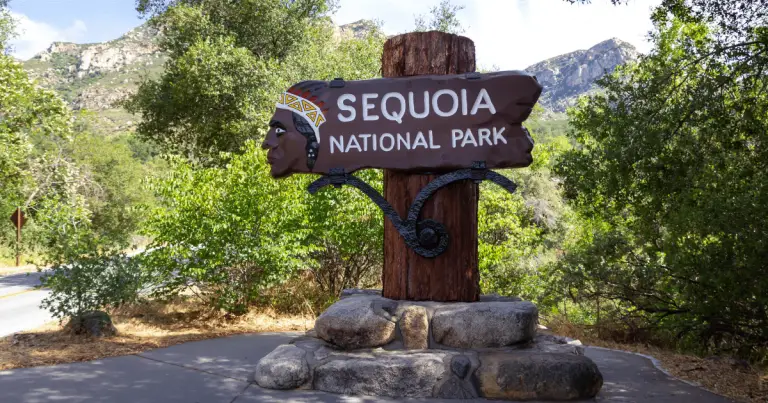The Beauty and Mystery of Seven Sacred Pools Sedona
Sedona, Arizona is a stunning destination for travelers who are looking for natural beauty and spiritual energy. The red rocks and canyons, combined with the high vibrations of the land, make Sedona a unique and powerful place.

One of the most interesting natural sites in Sedona is the Seven Sacred Pools, located in the middle of a desert area. The seven pools are a series of natural pools connected by cascading falls, forming a beautiful oasis.
Accessing the Seven Sacred Pools
To reach the Seven Sacred Pools, visitors must traverse the Soldier Pass Trail, a moderately trafficked loop trail rated as moderate in difficulty. This path is approximately 4.5 miles long, with an elevation gain of 656 feet. The trail offers a number of activity options and is best used from April until October.
The hike to the pools is not overly strenuous but does require some climbing and careful navigation around rocky terrain. It is recommended that visitors wear sturdy hiking shoes, carry plenty of water, and prepare for sun exposure. The trail is well-marked, but it can be easy to miss the pools if you’re not paying attention, so keep a lookout for the signs.
Please be aware that the Soldier Pass Trail requires a Red Rock Pass, which can be obtained from the Sedona Chamber of Commerce Visitor Center. Additionally, keep in mind that as the Seven Sacred Pools is a place of spiritual significance, visitors are encouraged to treat the area with respect and leave no trace.
Scenic Beauty and Natural Formation of Seven Sacred Pools
The Seven Sacred Pools of Sedona is a breathtaking spectacle of natural beauty, offering a mesmerizing landscape that perfectly encapsulates the harmony between the elements of water, rock, and vegetation. Emerging like a mirage in the arid desert, the pools provide a stark, yet beautiful contrast to the surrounding landscape.
The sequence of cascading falls trickling down into the pools creates a melodious symphony of sounds that blend harmoniously with the desert’s natural soundscape. The cerulean blue of the water forms a stunning contrast against the backdrop of Sedona’s famed red rocks, creating an overwhelming spectacle of color and form.
Breathtaking Landscape
Aside from the water, the area is adorned with a variety of lush vegetation, which thrives by the water’s edge, painting strokes of green against the red-orange hue of the rocks. This unexpected greenery adds to the sense of tranquility and beauty that pervades this sacred spot.

Equally impressive are the intricate formations of the rocks surrounding the pools, formed over millennia by the relentless forces of nature. These natural sculptures, carved by wind and water, add to the area’s mystic charm and encapsulate the raw, untamed beauty that Sedona is renowned for.
Indeed, a visit to the Seven Sacred Pools is not just a visual feast, but a spiritual journey, allowing visitors to experience the transformative power of nature in its most pristine form. The breathtaking landscape provides a tangible testament to the harmonious existence of diverse elements in nature, creating a vista that is as evocative as it is visually entrancing.
Geological Formation and Unique Features of the Seven Sacred Pools
The geological formation of the Seven Sacred Pools is a masterstroke of nature, hewn by the raw forces of wind, water, and time. The Sedona region is rich in sedimentary rocks, primarily sandstone and limestone, which are known for their susceptibility to weathering and erosion. Over millions of years, rainwater, wind, and other erosional forces have carved the pools into their current form, creating a series of spectacular, naturally formed basins.
Each pool in the Seven Sacred Pools is distinct, showcasing unique features that set it apart. Some pools are deeper, forming tranquil blue-green depths that invite further exploration, while others are shallow, with the bedrock visible through the clear, calm water.
The shape and size of each pool also vary, with some taking on elongated forms that follow the contours of the landscape, while others are more circular, suggesting a more localized erosion process at work.
In addition to their shape and depth, the pools also exhibit variation in their aquatic ecosystems. Some pools are teeming with life, hosting an array of aquatic insects, amphibians, and invertebrates, while others are more sterile, perhaps due to differences in sunlight exposure or water chemistry.

These distinctions provide visitors with a fascinating insight into the ecological diversity that exists even within such geographically close, yet ecologically diverse microhabitats.
The geological processes that sculpted the Seven Sacred Pools have produced a spectacle that is as scientifically intriguing as it is visually stunning. The pools stand as a testament to the slow yet relentless power of natural forces, and the incredible beauty that this process can yield.
Sacred Origins and Spiritual Significance
The Seven Sacred Pools hold a significant place in the folklore of the indigenous Native American tribes, particularly the Yavapai and Apache, who have lived on these lands for centuries. These pools are not just geological marvels but have a profound spiritual resonance rooted in Native American lore. The indigenous peoples saw water sources like these as sacred, life-giving entities, and the Seven Sacred Pools were no exception.
In Native American beliefs, the pools were considered to be a nexus of spiritual energy, and a place where the physical world met the spiritual one. The water was considered sacred due to its life-giving properties and its capacity to shape the landscape around it. The number seven also holds spiritual importance in many indigenous cultures, often symbolizing perfection, completeness, and the cyclical nature of life. In this context, the Seven Sacred Pools were seen as a perfect natural expression of the spiritual world’s influence on the physical one.
Exploration of Native American Beliefs and Legends Surrounding the Pools
Legends abound about the pools, many of which revolve around the water’s healing properties. One prevalent legend states that those who bathe in the pools under the full moon can heal their ailments and gain spiritual insight. Other folklore speaks of the pools as the dwelling place of divine spirits, who could be communed with at these locations.

Indigenous tribes also observed rituals and ceremonies at the pools. These were often tied to the seasons and lunar cycles, reinforcing the connection between the earthly and spiritual realms. The pools were also seen as a place of purification, where one could cleanse themselves physically and spiritually.
The Cultural and Spiritual Importance of the Site in Indigenous Narratives
In indigenous narratives, the Seven Sacred Pools transcend their physical attributes to become symbols of spiritual enlightenment, healing, and communion with nature. They serve as a stark reminder of the deep bond between the indigenous tribes and the land on which they lived, a symbiotic relationship where respect and reverence for nature were paramount.
The Seven Sacred Pools continue to be a spiritual haven, with many visitors reporting feelings of peace, tranquility, and serenity during their visit. It is essential to approach these sacred sites with respect and consciousness of their cultural significance to ensure that they can be preserved and appreciated by future generations.
This deep-rooted spiritual connection continues to draw visitors from all over the world, seeking not just its natural beauty but a glimpse into an ancient, spiritual world where man and nature exist in harmonious coexistence.
Final Thought
The Seven Sacred Pools of Sedona encapsulate a unique blend of natural wonder, scientific intrigue, and spiritual significance. They stand as a testament to the power of nature’s forces and the rich sedimentary geology of the Sedona region. Simultaneously, they carry profound spiritual importance, deeply rooted in Native American beliefs and lore. These pools are not merely physical landmarks but revered symbols of life, healing, and spiritual enlightenment.
As we continue to explore and appreciate such natural wonders, it is essential to honor their cultural significance and show respect for the traditional beliefs associated with them. In doing so, we uphold a mindful approach to nature that enriches our understanding and urges us to preserve these sacred sites for future generations.






